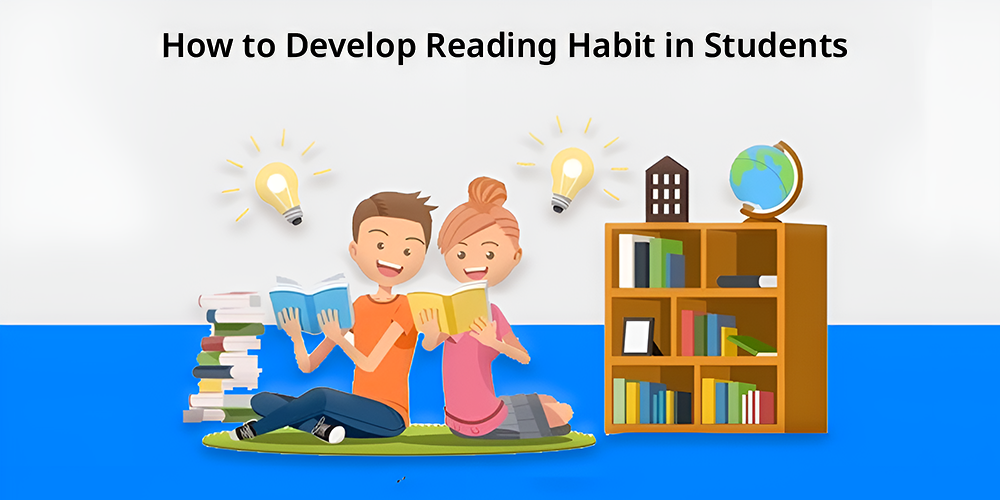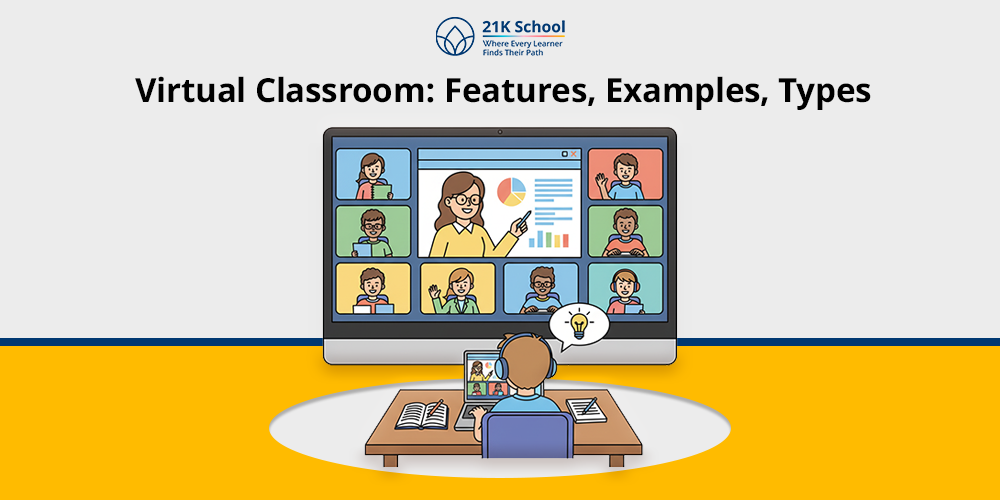
Reading should be seen as useful for the rest of your life. Since it teaches you knowledge, empathy , creativity and helps improve your critical thinking .
Teaching students reading habits, benefits their school performance and makes them more eager and curious about everything happening around them.
Find benefits of reading for students
Again, with so much competition for students’ attention lately, helping them get into a regular reading habit can be hard.
Offering the proper environment and motivation means children often enjoy reading as they get older.
Here are 10 sensible and tested methods for students to develop and keep a reading habit.
Contents
- 10 Tips How to Develop Reading Habit in Students
- 1. Create a Friendly Reading Environment
- 2. Set a Daily Routine For Reading
- 3. Let Them Freely Choose
- 4. Go for Library Trips
- 5. Add Some Fun Activities Amid Reading Periods
- 6. Be Role Models for Reading
- 7. Surround Students with Books
- 8. Connect Real Life with Reading
- 9. Involve Parents and Caregivers
- 10. Avoid Pressure or Judgement
- Concluding Thoughts: Create Readers, Create Leaders!
10 Tips How to Develop Reading Habit in Students
Reading is a sacred feeling. It is reserved for people who are curious to know the world better without having to actually experience everything.
Explore how to read faster .
Either it is a kid or an adult, developing a reading habit can result in evolving so many aspects of life. So, the responsibility of curating such habits is of educators and parents.
Follow the following tips or blueprint to teach your kids the fruits of reading daily.
Also read these tips to help students build better reading skills
1. Create a Friendly Reading Environment
The first thing to do to develop a reading habit in your child is to make it engaging. Set up reading areas in the classroom and at home, using bookshelves, plenty of cushions for comfort and interesting posters.
The idea is to help reading become something you enjoy rather than a complicated chore. Creating separate areas to read in schools helps see that reading for fun is not the same as assigned reading.
If the setting is friendly, it makes students more eager to read a book .
2. Set a Daily Routine For Reading
Sticking with a routine helps us develop good habits . You can train reading every day for 15 minutes, either before school, after lunch or at bedtime.
It helps students develop the habit of reading on a daily basis. While teachers allow for silent reading during lessons, parents too can schedule it as part of evenings with their children.
You don’t have to read for a long time every day. Just a few minutes regularly can be very helpful. What works best is treating it as an essential and fun part of your day.
Adjust your study routine techniques to have a good reading schedule.
3. Let Them Freely Choose
Making choices matters a great deal. Let students decide on what to read from comics, mystery books, fantasy, non-fiction or graphic novels.
Reading things they enjoy makes children more likely to keep reading. Don’t strict yourself on what counts as a good book.
Whatever format, if the text helps kids read more, it supports developing the habit.
4. Go for Library Trips
Libraries have wonderful collections of books and many other opportunities too. Routine library sessions, inside the school or within the local community, help students encounter different kinds of books and writers.
Motivate students to search for materials, come forward with their questions and connect with the school’s librarians.
Allow your kids to enjoy the fun of borrowing a book and wanting another. Both the library and book bingo can be used as fun activities to get students more involved.
5. Add Some Fun Activities Amid Reading Periods
You can do something fun before or after reading to keep the fun in learning. Arrange story-telling, hosting games around books, offering quizzes or putting on dramatized versions of stories students have read.
When kids work with these interactive parts, it numbs dullness and allows them to relate to the story more intimately.
Working with multimedia can be a stimulating way. Compare the action in a book to that in its corresponding movie.
Also go through these fun and engaging educational activities for kids
6. Be Role Models for Reading
Children learn by watching the behavior of others. A teacher or parent’s excitement about books communicates a strong message to kids.
Read with your child, tell them about the books you love and have them share their reading with you too. Students are likely to care about reading if they notice that adults value it.
You can engage kids into the story early on by reading aloud to them inside or outside of class.
7. Surround Students with Books
Keep books always within reach. Place books where everyone in your home or classroom can reach them easily.
Swap them out and change them often so they remain both interesting and engaging. Try to have books your child can read at any time such as in the car, at the bedside or in places you spend time waiting.
If something is familiar to us, it often sparks our curiosity and what we are curious about often starts to feel like a habit. The more often children see books, the easier it is for them to engage with them.
Here are some activities to encourage curiosity in children
8. Connect Real Life with Reading
Show students that reading is not limited to what they do in school. Prove to them that reading can help in mundane activities like looking up recipes, navigating maps or finding instructions.
Invite readers to explore activities linked to the things they read—such as reading about gardening and planting a little garden. Noticing how reading helps results in easy tasks motivates students.
Learn more reading activities for kids .
9. Involve Parents and Caregivers
Reading shouldn’t stop when the school bell rings. Suggest that parents read to their children, talk about the books they own and take them to bookstores or libraries.
Encouraging caregivers to use reading logs, make recommendations for books or suggest home reading tips will help develop this habit. Both parents and teachers should work together closely.
Participating in workshops, joining newsletters or reading to your child can strengthen your relationship and help build a reading community.
10. Avoid Pressure or Judgement
Becoming a lifelong reader takes time for some students. Resist pushing them with comparisons, setting cut-off dates or telling them what to do during their process.
Notice the little steps you’re making, since forming a reading routine is a gradual process. Give your kid time and support when they need it.
Work on making your reading environment happy, rather than tense. An unpressured atmosphere tends to encourage children to explore books.
Explore the types of reading skills .
Concluding Thoughts: Create Readers, Create Leaders!
Creating readers out of students involves more than just having them read. They must feel supported, encouraged often, and truly enjoy hearing and reading stories.
When we pair order with innovation and have fun while reading, students find reading enjoyable. Books should grow in young readers a sense of inquiry and wonder, by engaging them on every page. Buckle up to experience lifelong learning from books and to stem up the love of reading in your students.



